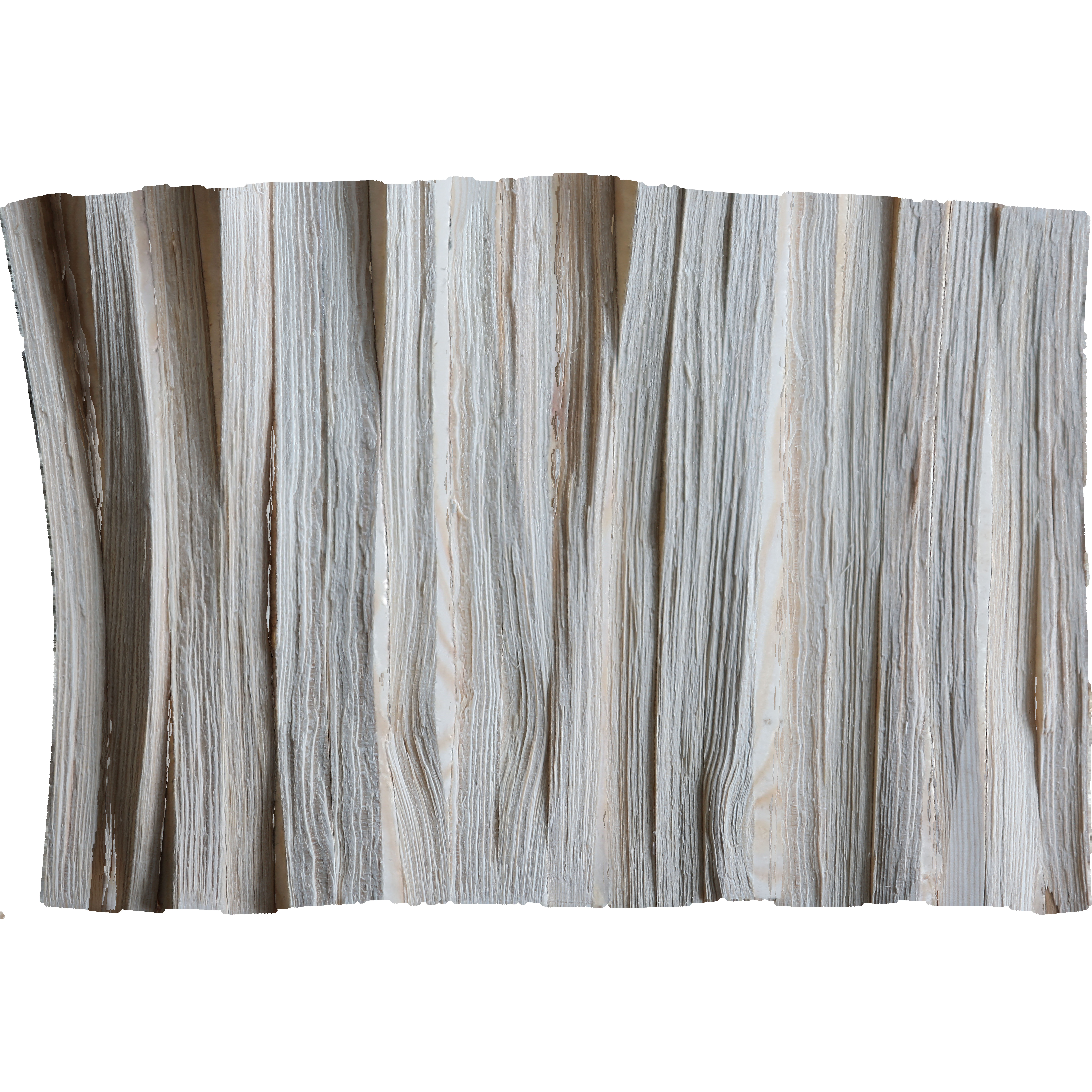BREAK
A post-digital exploration of the cleaving of timber.

The focus of this thesis lies on the exploration of cleaved timber as a material and the creation of a process of working between the physical and dig-ital. Different methodologies are explored and developed by working with both physical and digital representative models of cleaving. By employing scale tests of cleaved wood, the material is examined, categorized and digitized in a way that al-lows for further digital exploration. These various forms and shapes influence the design ethos and create the fundamental perspective of materiality and texture for this project.

The initial process is conducted using single scale cleave tests that are an exploration into trying to control the cleaving direction. The process is extrapolated by combining these pieces together and testing a different scale of application. To further explore both the texture and materiality of the cleaved surfaces, a process of digitization was created. Digitization required several iterations before usable 3d meshes could be produced. Using photogrammetry, multiple 3d meshes of the material were created by use of a repeatable method of arranging cleaved wood pieces in various formations. Manipulations of these meshes allowed for the creation of a model that functions as both an analog of a physical model and a way to create architectural representation. Individual pieces of a final design are created digitally with a focus on retaining materiality through this digitization process.

The thesis concludes in two distinct studies of form and representation of a cleaved structure: an open air structure that follows a physical model result, and a chapel made from digitized cleaved surfaces. The investigation examines the material consequence of using cleaved timber as a building material and how a post-digital workflow studies material. The process of working and equivocating physical and digital texture and materiality guides the design and creation of architectural representation in various forms. That workflow stems from the view that by working with textures, both digital and physical, an exploration of materiality is possible that is both new but also linked to the original material and an architects role in creating a built environment.

Keywords: Cleave, Embedded information, Mesh, Photogrammetry